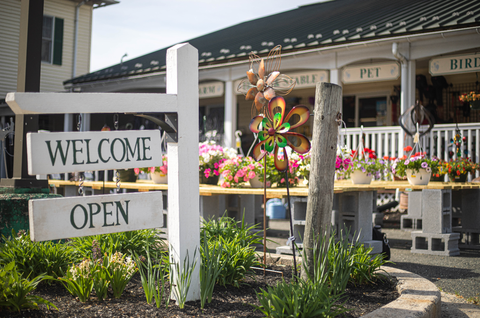Bring the Outdoors In: The Benefits of Houseplants as the Weather Cools
With cooler weather approaching, college classes starting, and more time being spent indoors, it’s the perfect opportunity to consider adding houseplants to your living space. Not only do they brighten up your home or dorm, but houseplants also help reduce indoor toxins and oxygenate the air, contributing to a healthier environment.
The Mill of Kingstown has just received a fresh delivery of houseplants that are perfect for improving indoor air quality. All indoor plants produce oxygen at night and help remove toxins from the air, making them a valuable addition to any room.
The Power of Palms
Palms are excellent indoor plants known for their ability to produce oxygen, but did you know that the Areca Palm produces oxygen 24 hours a day? While all palms generate oxygen at night and help filter toxins from the air, the Areca Palm

is particularly effective.
Palms require good air circulation, part sun to light shade, and soil that is slightly moist in the summer and drier in the winter. Many palms can thrive indoors for 10 years or more. The Ponytail Palm, also known as the Elephant Foot Tree, can live for over 30 years, making it a long-lasting and low-maintenance choice. Currently available varieties include Areca, Ponytail, and Foxtail palms.
Sansevieria: The Versatile Oxygen Booster
Sansevieria, commonly known as Snake Plant, Mother-in-Law’s Tongue, Viper’s Bowstring Hemp, or Saint George’s Sword, is another excellent choice for oxygenating your indoor space. Sansevieria is particularly efficient at releasing oxygen at night, outperforming many other houseplants.

Historically, Sansevieria has been used since ancient times to increase oxygen levels in sleeping areas. The tall, upright leaves also serve as natural dust collectors—just wipe them down with a moist paper towel or soft cloth once a month to keep them clean.
Sansevieria requires minimal care, needing water only every 10-14 days under typical indoor conditions. While it can tolerate low light, it prefers indirect light and thrives about ten feet from a south- or west-facing window. Smaller varieties can live for 5-7 years, while larger ones can last 25 years or more.
Philodendron: A Classic with a Twist
Philodendrons are another excellent option for indoor plants, known for releasing notable amounts of oxygen during the night. These plants thrive in humid conditions, though the soil should never be soggy. Philodendrons come in a variety of eye-catching varieties, including the variegated White Prince, Pink Princess, Painted Lady, Prince of Orange, and White Wizard. For those who prefer interesting foliage, Monstera and Jungle Boogie are also great choices.
Philodendrons are easy to care for, making them ideal for new houseplant enthusiasts. They prefer indirect sunlight and help remove toxins from the air. With proper care, they can live for more than 20 years, and vining varieties are easy to propagate.

The History and Benefits of Indoor Plants
The practice of bringing plants indoors dates back to ancient Egypt, India, China, Greece, and Italy around 6000 BC. Today, we know that having a variety of indoor plants can significantly improve indoor air quality by removing toxins and increasing oxygen levels. In addition to these health benefits, studies have shown that indoor plants can reduce stress and enhance overall well-being.
By incorporating a diverse range of houseplants into your indoor environment, you not only create a more vibrant and inviting space but also contribute to a healthier and more relaxing atmosphere. Stop by The Mill to browse their selection of plants












